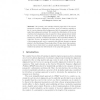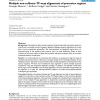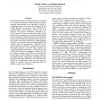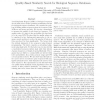71 search results - page 7 / 15 » Comparing Best-First Search and Dynamic Programming for Opti... |
IDA
2007
Springer
14 years 1 months ago
2007
Springer
We present a new machine learning approach to the inverse parametric sequence alignment problem: given as training examples a set of correct pairwise global alignments, find the p...
BIBE
2008
IEEE
14 years 1 months ago
2008
IEEE
— The Smith-Waterman algorithm is a dynamic programming method for determining optimal local alignments between nucleotide or protein sequences. However, it suffers from quadrati...
BMCBI
2007
13 years 7 months ago
2007
Background: The analysis of the promoter sequence of genes with similar expression patterns is a basic tool to annotate common regulatory elements. Multiple sequence alignments ar...
ISMB
1996
13 years 8 months ago
1996
Determining whether two DNA sequences are similar is an essential component of DNA sequence analysis. Dynamic programming is the algorithm of choice if computational time is not t...
BIOCOMP
2007
13 years 8 months ago
2007
Low-Complexity Regions (LCRs) of biological sequences are the main source of false positives in similarity searches for biological sequence databases. We consider the problem of �...




